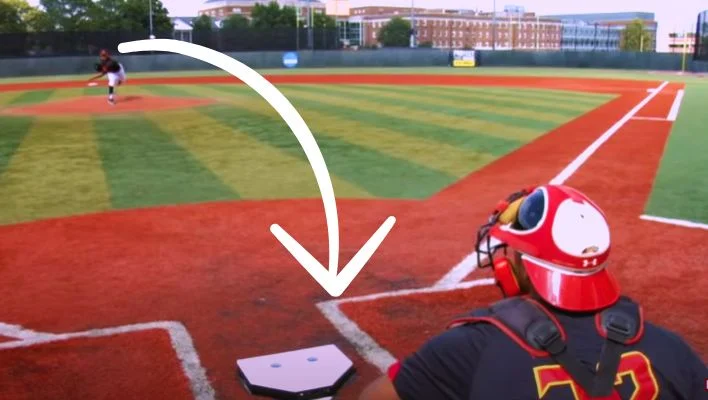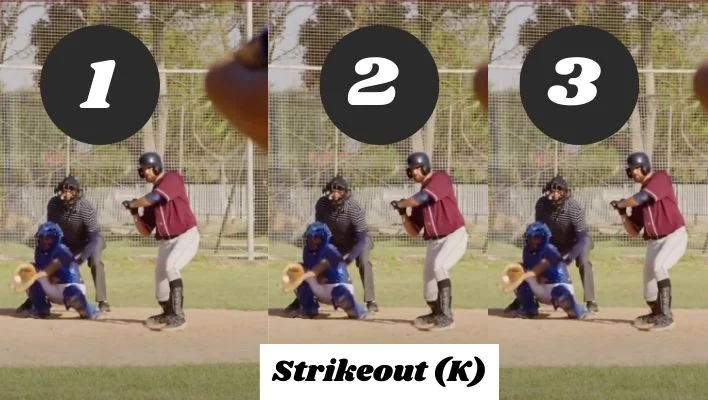How Many Strikes in Baseball: What is strike? & Rules
Are you curious about how many Strikes in Baseball? In this comprehensive guide, we’ll explore the ins and outs of strikes, from their definition to the specific scenarios in which they are awarded. Join us as we dive into the world of baseball strikes and uncover the strategies and dynamics behind this essential aspect of America’s favorite pastime.
What Is a Strike in Baseball?

In baseball, a strike is a pitch that passes over home plate between the height of the batter’s knees and shoulders, within the designated strike zone. The strike zone, defined by the batter’s stance, extends over home plate. Should a pitch fall within this designated area and the batter opt not to swing, it will result in a strike call. Conversely, swinging at a pitch outside the strike zone and missing still registers as a strike. Feel free to use this revised sentence! Additionally, foul balls can be counted as strikes, depending on the count of strikes against the batter.
The Strike Rule Explained
The rulebook defines the criteria for a strike in baseball. Rule 7, Section 2, which covers Strikes, Balls, and Hits, details various situations in which a batter receives a strike. These include situations where a pitch enters the strike zone and the batter does not swing at it. Also, when the batter swings and misses a pitch. Additionally, when a pitch becomes a foul with fewer than two strikes, or when a pitch becomes a foul tip or a foul from an attempted bunt. These regulations ensure the game is played fairly and consistently.
How Many Strikes Do You Get in Baseball?
In the sport of baseball, the umpire allows a batter three strikes before declaring them out. Each batter begins their turn at-bat with a count of zero strikes. As long as a batter has fewer than three strikes, they may keep batting. But with three strikes, they’re out, marking a strikeout for the opposing team. This adds strategic complexity, prompting batters to carefully consider whether to swing at a pitch.
See Also: How many rounds in baseball
How Many Ways Can a Batter Get a Strike?
Baseball has multiple scenarios where a batter can earn a strike. The most straightforward scenario is when the pitch enters the strike zone, and the batter swings at it but fails to make contact. The umpire can call a strike when the batter swings and misses or when the batter hits a foul ball, provided the batter has less than two strikes against them. Furthermore, a pitch hitting the batter in the strike zone will also count as a strike. Bunting a pitch into foul territory or failing to check a swing can also result in a strike.
See Also: How Many Quarters in a Baseball Game
What is Baseball Strikeout (K)
A strikeout, denoted as “K” in scorebooks, occurs when a pitcher throws three strikes to a batter. These strikes can be a combination of swinging strikes, where the batter swings and misses, and looking strikes, where the batter fails to swing at a pitch within the strike zone. A strikeout is a significant achievement for the pitcher and represents a missed opportunity for the batter to reach base.

Explanation of When a Pitch Becomes a Strike
A pitch is considered a strike when it meets certain criteria outlined by the rules of baseball. A strike is called when the ball travels through the strike zone, defined as the space over home plate between the batter’s knees and shoulders. If any part of the ball passes any portion of home plate in this area, it’s deemed a strike, irrespective of the batter’s swing. This rule ensures consistency and fairness in determining strikes.
A pitch can also be ruled a strike if the batter hits a foul ball with fewer than two strikes in the count. However, if the batter hits a foul ball after already having two strikes against them, it will not count as a third strike. The count stays unchanged, allowing the batter to proceed with their at-bat. This rule prevents a batter from being called out on a foul ball after already being at a disadvantage with two strikes.
If a Batter Has Two Strikes Then a Foul Ball Has No Impact on the Count
When a batter has two strikes in their count, a foul ball will not affect the count. Even if the batter hits multiple foul balls, they will not be called out on strikes. This rule allows batters to have more opportunities to stay in the game and potentially reach base, even after hitting foul balls.
If a Batter Bunts the Ball Foul With Two Strikes Then the Batter Has Struck Out
If a batter attempts a bunt with two strikes and fouls it off, they are considered out on strikes. This exception applies even though fouls typically don’t affect the count when there are two strikes. This rule encourages strategic decision-making by batters, as attempting to bunt with two strikes carries the risk of an immediate strikeout.
A Pitch is a Strike When the Batter Swings and Misses
A pitch is most frequently called a strike when the batter attempts to hit it but fails to make contact. Whether it is a fastball, curveball, or changeup, if the batter fails to make contact with the ball after swinging, it will be counted as a strike. This scenario highlights the importance of timing, hand-eye coordination, and pitch recognition for the batter.
How Many Foul Balls is a Strike?
A common question in baseball is whether a foul ball can count as a strike. The answer depends on the count of strikes against the batter. When the batter’s count has less than two strikes, any foul ball is recorded as a strike. However, once the batter has two strikes, foul balls will not count as additional strikes. This rule allows batters to have more chances to stay in the game and potentially reach base.
See Also: How many outfielders in baseball
FAQs
In baseball, a strike happens when a pitch either passes through the strike zone without being swung at or when the batter swings and misses. It can also occur if the batter hits a foul ball with fewer than two strikes. Accumulating three strikes leads to a strikeout.
During a game, a batter can endure multiple instances of striking out. There is no limit to the number of times a batter can be called out on strikes during a game. However, striking out too frequently can negatively impact a batter’s statistics and overall performance.
In baseball, a batter needs three strikes to be called out. Once a batter accumulates three strikes, they must retire to the dugout, and an out is recorded against their team.
Whether a foul ball is considered a strike depends on the count of strikes against the batter. When a batter has fewer than two strikes, a foul ball is counted as a strike. Conversely, once the batter accumulates two strikes, a foul ball does not contribute to their strike count.
Swinging at a ball outside the strike zone counts as a strike, preventing batters from benefitting from unreachable pitches. A strikeout happens when a batter accumulates three strikes in one at-bat, indicating a missed opportunity to hit the ball and advance. It’s marked in the scorebook with a “K” and is a notable accomplishment for the pitcher.
Conclusion
In conclusion, strikes play a crucial role in the game of baseball. These elements dictate the result of every at-bat. They play a pivotal role in shaping the strategic and dynamic aspects of the game. Whether the batter swings and misses hits a foul ball, or fails to check their swing. Each scenario adds excitement and challenges to the game. Understanding the rules surrounding strikes enhances our appreciation for the skill and strategy required in this beloved sport. So next time you watch a baseball game, keep an eye on the strikes. Marvel at the intricacies of this timeless game.
